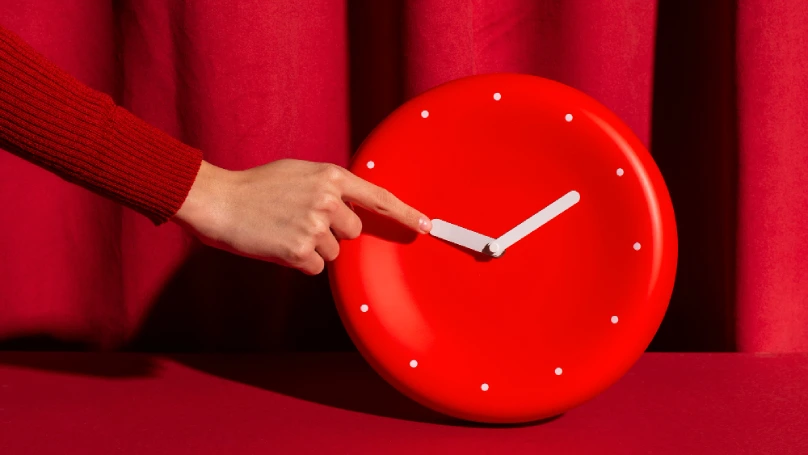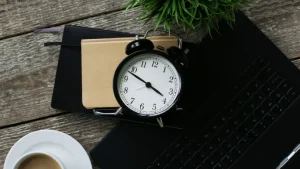Unfortunately, many of the creative types don’t play fair with time management. You drift totally into an idea whirlpool only to realize that hours have passed. Does this ring a bell? Whether you are a writer, artist, designer, or musician—talking about time management seems like something pulled off while trying to catch smoke in your bare hands. Suppose I said time management doesn’t have to be about crushing your creativity; it can be a structure where your imagination can explode or find its deck without all that chaos.
Creatives have no knack for structures because when inspiration strikes, no one would dare to assume there is a time fixed for it. One second, lots of ideas are competing for your attention; the next second, just a blank page staring back at you. The silver lining? You can choose creativity or productivity; with a few ingenious tricks, you can use your creative energy while getting stuff done. This article discusses time-management tips that favor creativity so that you can put your real concentration into what you do best.
Let’s dive in!
Why Time Management Feels Different for Creative People
Creative geniuses were grouped differently. You observe the emotive nature of a thought while you are not only executing that thought. Creativity doesn’t go by the clock just like a regular 9-to-5 job. One minute you’re brainstorming a fabulous idea; the next you’re in a serious creative rut. After this unpredictability; the time management starts feeling as if you’re walking against the wind.
But here is the thing: structure doesn’t snuff creativity; instead, it enhances it. Treat time management as the basic canvas for your masterpiece. Without a canvas, your ideas could be disjointed and focused elsewhere. With that canvas, you have the foundation upon which to build. It is just a matter of finding a balance that suits your structure and upholds creativity, not suffocating it.
The Myth of the “Perfect Time” to Create
How many times have you waited for that perfect moment to start a project, only to find that perfect moment never comes? alert: There is no perfect time to start creating. Inspiration does not come on schedule; it is a byproduct of action. Waiting for the stars to align only ensnares many a creative in the sweet trap of procrastination.
Create your momentum instead of waiting for inspiration to hit. Start with something tiny: a rough outline, a couple of lines, or a couple of chords. Very often it is that first movement that gives birth to creativity. Consider it a boost for a car; once the engine starts, it can keep running. Creativity is like a muscle; it takes work to be activated. So do let go, initiate, and create, whether perfect or not.

The Power of Time Blocking for Creatives
Time blocking becomes a game-changing tool for creatives. You chunk the day into slots of time allotted for certain activities. You may block two hours for writing, an hour for brainstorming, and 30 minutes for responding to emails.
A very beautiful thing about time blocking is that it institutes boundaries while it does not muzzle creativity. This is pretty much like the construction of guardrails on the highways-you remain free to drive yet are not so likely to swerve off. Also, it ensures prioritization towards more important activities instead of the wastage of such irreplaceable and highly resource-intensive creative energies for trifles.
Prioritizing Projects: The Art of Saying No
Whatever happens in the head is a flow of ideas; trying to execute them all leads to an overwhelming situation. Prioritization is needed in time management. First, one needs to distinguish which projects run parallel with your long-term goals and provide the most value. Ask yourself: Am I excited about this? Will I make a difference? This feels like a project worth being let go of.
Learn to say no. When you commit to something, you steal time from somewhere else; make sure that commitment is worth it. Set boundaries to protect your creativity. A ‘no’ isn’t the lost opportunity; it’s making space for the right one.
Use tools like Eisenhower’s Matrix to separate the urgent from the important. Focus on what counts. Learn to procrastinate or delegate pretty much everything that’s not imperative. Prioritization is not a constraint; it’s the opening door to your larger creative work.

Beating Procrastination: Tips for Creative Procrastinators
Sometimes, the creative mind can do itself in by having to manage so many emotions and think so many thoughts. The fault in this case lies in postponing due to the imperfect moment-this is what is known as procrastination. The idea is simple: do it while you don’t feel ready!
Start to work on a big project by breaking it down into smaller, doable fragments. For example, say, “Write for 200 words,” not, “Write a book.” Each time you achieve a small win, the tiny increments build momentum. The Pomodoro technique can be used to fight lethargy-set an alarm for 25 minutes before working and go for a 5-minute recharge.
Another trick is to change the environment surrounding you. A new environment helps in boosting creativity whilst avoiding distractions. Also, set deadlines- even for yourself for added urgency.
Most importantly, allow yourself to procrastinate. Do not use that realization to shame yourself but instead as fuel. Progress over perfection. Race does come before the muse. Start slow, and she will surely catch up!
Building a Creative Routine That Works
The establishment of a conducive environment for creativity is essential. First, what are your sentiments about creativity? Early or late? This is the time you will set aside for all the work you do related to creativity. Create cues for this time, such as brewing a certain tea or listening to a specific playlist. Such actions will condition your mind to be ready for flight and free and express. Keeping to the lower end of your goals will also do quite a lot to help you gain momentum as you break down bigger projects into little different tasks. Don’t forget that flexibility in a routine embraces spontaneous opportunities that arise, while structure nurtures and does not hinder creativity.
Get insights into how successful people think by reading our article on effective thinking strategies.
in summary
Time management to be creative means running a tight ship, yet keeping a loose rein to allow the flow to happen. Create momentum through working when you can find the time; 15 minutes of waiting to feel inspired. This is where you identify your number one priorities and just stay focused on them; this will bless you in being present for deadlines, followed by important tasks. It is very important to preserve one’s energy for creativity; therefore, saying no becomes a tool whenever distractions come in the way. Practice the Pomodoro method in spurts against procrastination.
Make your way through techniques that require contrasts of stimulation and stillness in activity periods. When tools are misused, they tend to block a flow rather than ease it up; they should thus be adopted strategically and focused creating a task-oriented working atmosphere. Create unbending boundaries of creativity for yourself, note all the changes, and allow a little self-praise every once in a while. Of course, celebrate your victories, no matter how small.
This is where you realize that you control your time while setting it free for creativity. Time management is not a restriction; it is an approach to grounding oneself to ensure that one gives their best work.











